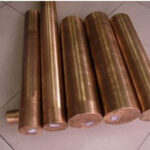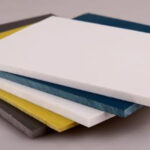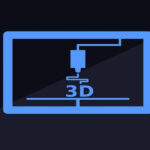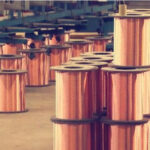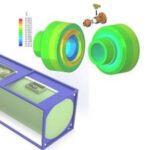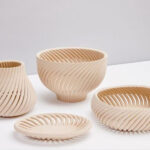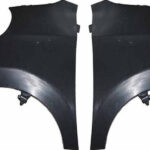In order to better respond to future manufacturing competitions, major manufacturing countries in the world have successively proposed national strategies for upgrading their own manufacturing industries. The more famous ones are the German Industrial Manufacturing 4.0 and the American Industrial Internet.
They have actively introduced new policies for the upgrading of manufacturing industries. , Encourage technological innovation in the manufacturing industry and give key funding. Among them, laser welding has attracted much attention as an important part of high-end equipment technology.
While fierce competition in technology research and development, China follows the trend of the times, seizes the historical opportunity, and misses the opportunity to propose “Made in China 2025”. As a strategic emerging technology, laser welding technology is on the agenda for leading the upgrading of the manufacturing industry. However, laser welding “production, learning, and research” cannot be well connected, and there are certain limitations and deficiencies. For example, it cannot solve defects such as pores and spatter in some applications. Single-focus laser welding cannot be used as a heat source. Insufficient control of temperature cycles, etc.
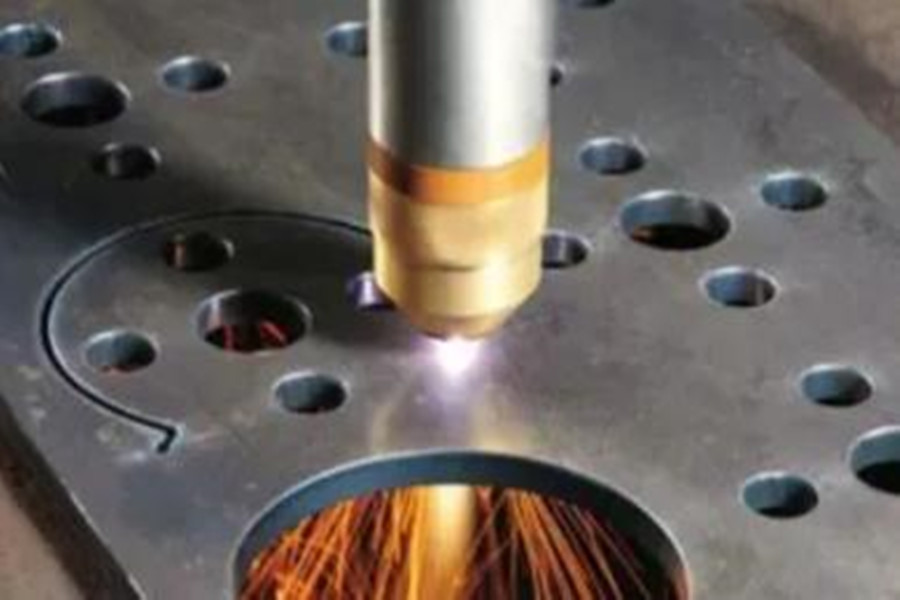
According to the actual needs of welding, laser welding has proposed a variety of new technologies by solving practical problems. For example, Professor W. Steen of Imperial College London proposed the idea of laser-arc hybrid welding. The development of laser-arc hybrid welding technology has made up for the shortcomings of single laser welding to some extent, and has expanded the application range of laser welding. The interaction between the laser and the arc exerts the advantages of both, reduces the requirement of the welding gap size, reduces the cracks and pores that appear during welding, and helps to improve the performance of the welding part.
So far, laser welding technology has developed into many types, such as heat conduction laser welding, laser deep penetration welding, laser filler wire welding, laser-arc hybrid welding, remote laser scanning welding, and laser brazing. Laser welding seam tracking and high-speed camera real-time monitoring of the welding seam process and other intermediate process control, as well as laser welding defect processing, jointly solve the related limitations and deficiencies of laser welding.
Research progress
Table of Contents
In recent years, domestic and foreign research teams have continuously explored and studied the most suitable process parameters from the perspective of laser movement and heat source combination, and improved the technology of a variety of laser welding methods, including laser deep penetration welding, laser-arc hybrid welding, etc. The research of laser welding is not just about appearance, but researching the process characteristics of welding through modern characterization methods such as high-speed cameras and spectroscopic analysis, trying to explore the formation mechanism of weld defects. On the other hand, the internal changes of laser welding are more complicated. Each research team tried to apply external energy such as magnetic field, multi-arc and electric field to the laser welding process, focusing on the improvement of weld defects, improving its mechanical properties and welding. quality.
laser technology
Laser, the full name of stimulated radiation amplified light, is another major breakthrough after nuclear energy and semiconductor technology in the 20th century. It is known as the “fastest knife”, “most accurate ruler”, and “brightest lamp”. We are not unfamiliar with lasers. It uses stimulated radiation when electrons transition to low energy levels to achieve a large number of photons of the same frequency and phase that are emitted in a specific direction at the same time, generating extremely high energy in a local area.
As a directional energy device, its high energy density and high controllability are very suitable for special processing of materials. In fact, laser technology has long been applied in the field of material processing, such as laser welding, laser drilling, and laser drilling. The following will introduce several traditional laser plastic processing technologies and new laser processing technologies.
Traditional laser processing technology
The traditional applications of concentrator in the plastics processing industry are mainly laser cutting, laser drilling and other subtractive manufacturing technology, laser welding, and laser marking technology.
laser cutting
Laser cutting uses the high-energy density laser beam of the laser to quickly and accurately cut the material. The principle is that the high-energy laser beam quickly melts, vaporizes or decomposes the material in the laser irradiation area to form a slit and divide the material into two parts. In principle, laser cutting can be used for any polymer material, but after different materials are cut, the deformation, the melting of the incision, and the cutting accuracy are different. Different cutting parameters need to be set for specific materials, or side-cut products are difficult to use. Laser cutting has the advantages of non-contact, high precision, controllable processing, convenient and quick, but the production efficiency is not high, and it is suitable for manufacturing plates with complex shapes.
Laser drilling
Laser drilling can be regarded as a variant of laser cutting in drilling applications. The high-density laser beam irradiates the material, so that the material is instantly vaporized and evaporated to form a cavity. It has fast drilling speed, high efficiency, non-contact toolless It is widely used in PCB printed circuit board industry for the advantages of abrasion, high depth-to-diameter ratio, etc., for drilling high-precision small holes.
Laser welding
Laser welding is a technology that uses a high-energy laser beam as a heat source to weld materials, heating at the material joints, so that the molecular segments of the material move and diffuse together. It can be used not only for the same material, but also for different plastics. Between processing and forming. The advantage is non-contact welding, which can be used for precision parts, has good bonding strength and airtightness, and does not produce dust and debris. It can produce items with complex shapes and different combinations of plastic components.
Laser marking
Laser marking technology is very common. The logos on many products we see are laser-marked products. Because of the high controllability of laser processing, very few substances are removed by heating and evaporating on the surface of the material, forming a rough surface or other effects. .
New laser plastic processing technology
New-type laser plastic processing technology is a newly developed processing technology in recent years, including laser plastic molding, selective laser sintering molding, light curing molding, laser melt electrospinning, and so on.
Laser plastic forming
Laser plastic forming is a newly developed technology that has been mainly aimed at sheet metal for a long time, but it is also available for plastic processing. Laser plastic forming does not require molds, but can process complex free-form surfaces. The mechanism is vertical irradiation of highly focused laser beams. On the plate to be deformed (because the plastic is not capable of absorbing laser, this step often needs to be coated with black polypropylene paint), so that the temperature of the irradiated surface rises sharply (not exceeding the melting point), and the temperature of the lower surface does not occur in a short time Change, due to the higher thermal expansion rate of the plastic and the high temperature gradient of the upper and lower surfaces, thermal stress will cause the plastic to bend sharply. After the irradiation is stopped, the irradiated surface begins to cool down and transfer heat to the surroundings. At this time, the temperature of the lower surface gradually rises. The upper surface begins to cool and shrink, and the plastic bends in the opposite direction. After being completely cooled, because the irradiated surface accumulates and accumulates due to heat, it cannot be completely restored, and the material will bend inward.
Repeating this process where the surface of the material needs to be bent can produce complex curved surfaces. The forming factors mainly include laser incident power, scanning speed, energy distribution, material absorption performance, material expansion coefficient, thermal diffusivity, thermal fusion, etc. The entire processing process is below the melting temperature, which has little effect on mechanical properties.
Selective laser sintering
Selective laser sintering (SLS) is a laser 3D method, which adopts a layer-by-layer accumulation method. Compared with traditional manufacturing technology, it has strong adaptability, high molding accuracy, moldless molding, and is not affected by complex structures. Advantage. Among them, polymer-based materials are the earliest applications and are currently more widely used and easier to form materials, such as polycarbonate (PC), PS, PA, PP, high-density polyethylene (HDPE), polyether ether ketone (PEEK) Wait. At present, the research focus is on the selection and preparation of materials, especially polymer composite materials. In theory, all polymer materials can be used in the field of SLS. However, polymer powder materials suitable for SLS technology need to meet certain physical standards (sphericity, particle size distribution, powder fluidity, etc.) and processing requirements (crystalline, amorphous, sintering temperature range, etc.).
Light curing molding
Light curing molding is also a kind of rapid prototyping, mainly using photosensitive resin and other materials, using laser to solidify the material layer by layer. The basic principle is: the laser emits an ultraviolet laser of a specific wavelength and intensity to illuminate the photosensitive resin in the resin tank, and the thin layer of resin in the irradiated area will undergo photopolymerization reaction and solidify to form a thin layer of the part, which is accumulated layer by layer. . The advantages of light-curing molding are high degree of automation, high molding dimensional accuracy, good surface quality of products, and not affected by the complexity of the structure. However, due to the large limitation of materials, there are few materials currently available, expensive and not high in strength.
Laser melt electrospinning
The laser is mainly used as a heat source during the preparation of melt nanofibers. First, the raw material is made into a thin plate of a certain thickness, and then fed into the slit groove at a certain feeding speed. At the exit end of the slot, the raw material is irradiated by the linear laser to melt, and stretched and thinned under the action of static electricity. Compared with traditional electric heating, thermal fluid heating, hot air heating, etc., laser heating is non-contact direct heating, which has fast heating speed, good polymer melt temperature uniformity, and can effectively solve the high temperature degradation of easily degradable polymers. Difficult problem.
Link to this article: How to classify new laser plastic processing technologies?
Reprint Statement: If there are no special instructions, all articles on this site are original. Please indicate the source for reprinting:https://www.cncmachiningptj.com/,thanks!
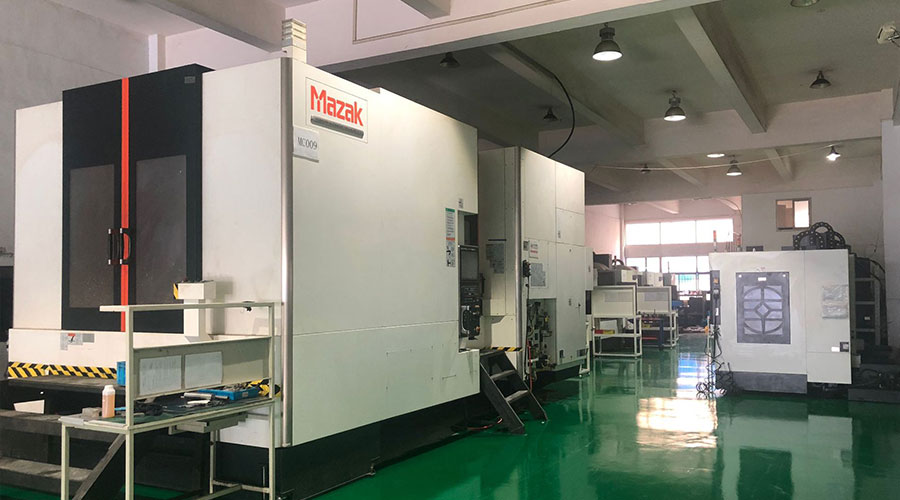 PTJ® provides a full range of Custom Precision cnc machining china services.ISO 9001:2015 &AS-9100 certified. 3, 4 and 5-axis rapid precision CNC machining services including milling, sheet metal to customer specifications,Capable of metal & plastic machined parts with +/-0.005 mm tolerance.Secondary services include CNC and conventional grinding, laser cutting,drilling,die casting,sheet metal and stamping.Providing prototypes, full production runs, technical support and full inspection.Serves the automotive, aerospace, mold&fixture,led lighting,medical,bicycle, and consumer electronics industries. On-time delivery.Tell us a little about your project’s budget and expected delivery time. We will strategize with you to provide the most cost-effective services to help you reach your target,Welcome to Contact us ( [email protected] ) directly for your new project.
PTJ® provides a full range of Custom Precision cnc machining china services.ISO 9001:2015 &AS-9100 certified. 3, 4 and 5-axis rapid precision CNC machining services including milling, sheet metal to customer specifications,Capable of metal & plastic machined parts with +/-0.005 mm tolerance.Secondary services include CNC and conventional grinding, laser cutting,drilling,die casting,sheet metal and stamping.Providing prototypes, full production runs, technical support and full inspection.Serves the automotive, aerospace, mold&fixture,led lighting,medical,bicycle, and consumer electronics industries. On-time delivery.Tell us a little about your project’s budget and expected delivery time. We will strategize with you to provide the most cost-effective services to help you reach your target,Welcome to Contact us ( [email protected] ) directly for your new project.
Link to this article:How to classify new laser plastic processing technologies?
Reprint Statement: If there are no special instructions, all articles on this site are original. Please indicate the source for reprinting.:Cnc Machining,Thank!^^

